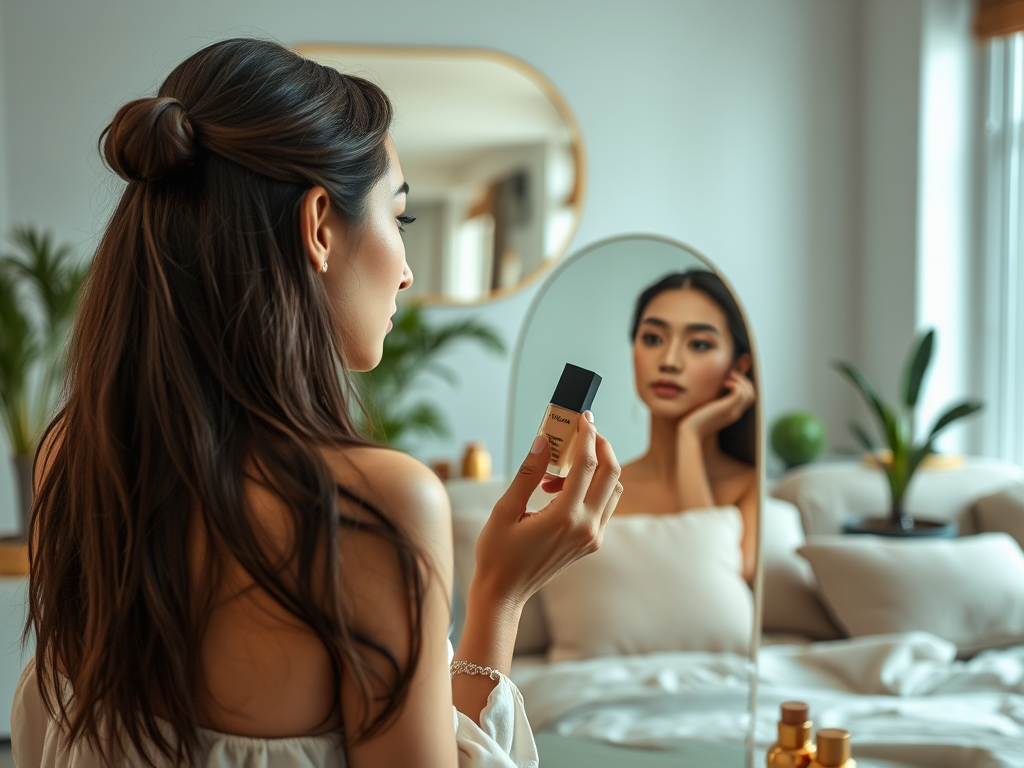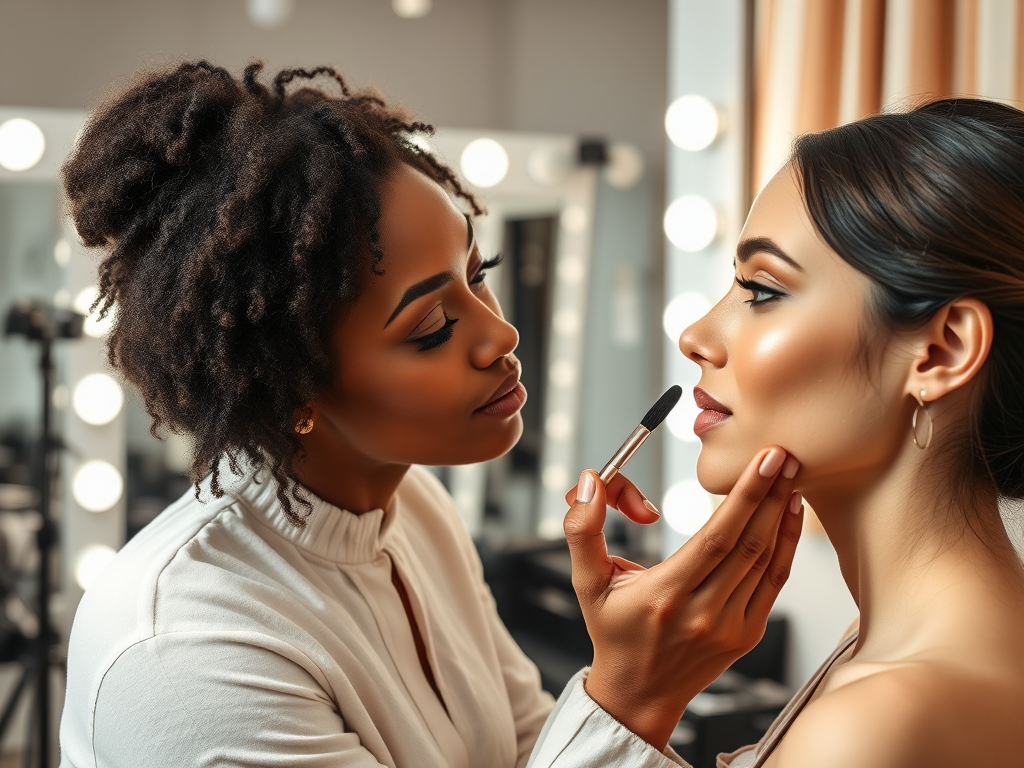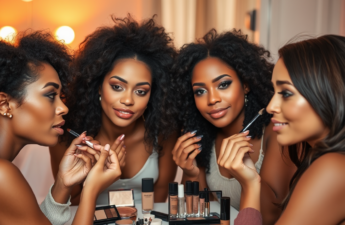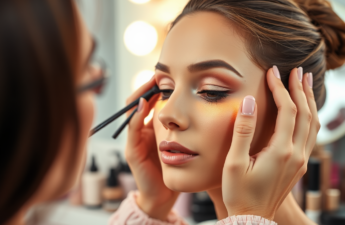Finding the right foundation shade is akin to solving a complex puzzle. Many makeup lovers often grapple with the challenge of achieving that flawless look where the foundation just blends seamlessly into their skin. Whether you’re just starting on your makeup journey or you’re a seasoned pro, the quest for the perfect shade can be overwhelming. The mistakes can be pretty noticeable, imparting a heavy or artificial appearance, leaving you feeling less than confident about your look. In this guide, we’ll explore practical strategies to ensure your foundation complements rather than clashes with your complexion. Understanding your skin type and finding balance can be the key to achieving a radiant, natural finish.
As makeup professionals often say, application begins with knowledge. This article will not only help you identify your skin tone but will also delve into how lighting impacts your choice of foundation. With expert tips and a thorough understanding of techniques, you’ll discover that the foundation is more than just a cosmetic product—it’s an essential tool to enhance your natural beauty and express your individuality. Let’s uncover the secrets to achieving a balanced look that shines with authenticity.
Understanding Foundation Shades

The right foundation shade is crucial to achieving a harmonic makeup look. When you ignore the significance of matching your foundation to your skin tone, the results can be disheartening, leading to a less-than-perfect appearance. A well-chosen shade can enhance your complexion and mask any imperfections while ensuring a flawless and natural finish that looks like a second skin. However, it’s essential to understand that foundations come with various undertones and finishes that can influence the overall effect you desire.
Common mistakes occur when individuals select shades based solely on the packaging or a fleeting glance in the store. Note that even the most experienced makeup artists sometimes misjudge a foundation shade due to inadequate lighting or an untrained eye. To avoid these pitfalls, familiarizing yourself with the spectrum of foundation choices available and how to match them to your unique complexion is vital. This will not only save you time but also empower you to make informed purchasing decisions.
Identifying Your Skin Tone

Identifying your skin tone is an important step in choosing the right foundation. It goes beyond the simple observation of the skin’s surface; specific characteristics reveal the undertones present in your skin. Determining whether your skin is warm, cool, or neutral can significantly narrow down your selection of shades. Here’s a breakdown of how to identify each skin tone:
- Warm Undertones: Look for hints of yellow or golden tones. Veins on your wrist appear greenish, and you tend to tan easily.
- Cool Undertones: These skin tones have hints of pink, red, or blue. Your veins appear bluish, and you may burn instead of tan.
- Neutral Undertones: This is a mix of both warm and cool. The veins might be hard to determine as they can look both green and blue.
To refine your choice further, testing shades is essential. Applying small samples directly onto your jawline can provide a clearer idea of how a foundation interacts with your skin. Additionally, ensure you assess the samples in natural light for the most accurate representation. Following these tips will help you avoid the common missteps many make when searching for that perfect foundation.
Understanding how your foundation looks in various lighting conditions is key. For example, what you see in the store fluorescent lights may differ significantly from daylight or indoor lighting. Here’s how different light sources can affect your foundation’s appearance:
- Daylight: Always a reliable reference when testing shades. Your foundation should blend effortlessly with your skin under natural sunlight.
- Indoor Lighting: Depending on the bulbs, your foundation may appear warmer or cooler, affecting how undertones are perceived.
- Flash Photography: The harshness of a flash may wash out colors or create stark contrasts, so always test before a significant event.
| Lighting Type | Effects on Foundation Color |
|---|---|
| Natural Light | Most accurate representation, highlights undertones. |
| Incandescent Light | Can warm up foundation, making it appear darker. |
| Fluorescent Light | Can emphasize ashy tones, especially in certain skin types. |
The Impact of Lighting on Foundation
Foundation can vary under different lighting conditions, which significantly influences how you perceive its effectiveness. For instance, daylight often reveals the true shade and undertones you’ve chosen, while indoor lighting can create either a warm glow or an unflattering sheen. It’s important to understand how each lighting source can alter your foundation’s appearance on your skin, leading you to make the best choices for day or night looks. During the testing phase, be mindful of the type of light you’re working with and how it interacts with the product.
Considering these factors gives you a better understanding of the foundation shade you need, ensuring you maintain that balanced appearance no matter the setting or occasion. You want a look that stays true, ensuring your complexion radiates confidence, whether under the sun or in dim evening settings.
Tips for Finding the Right Shade
Having identified your skin tone and considered lighting conditions, it’s time to explore practical tips for finding a perfectly balanced foundation shade. Simple yet effective strategies can lead you closer to that ideal match.
- Swatch Testing: Apply swatches of different shades on your jawline or wrist and see how they interact with your skin tone over time.
- Samples and Returns: Many beauty retailers offer samples. Use these before committing to a full-size product to ensure it’s the right match.
- Seasonal Changes: Your skin can change with the seasons. Be prepared to reassess once the sun comes out or as you spend more time indoors.
Also, consider the texture of the foundation you are choosing, as this can greatly influence how it looks on your skin. Options include liquid, cream, and powder foundations, each offering unique finishes and coverage. Understanding these differences will assist you in making the ultimate choice that not only matches in color but also in compatibility with your skin type.
Blending Techniques for a Natural Finish
Finding balance extends beyond choosing the right shade; it’s about how you apply and blend your foundation as well. Each technique can significantly impact how natural and polished your makeup looks. Here are some effective strategies to achieve that seamless finish:
- Using the Right Tools: Brushes, sponges, and fingertips all serve unique purposes for application—know which tool to use when.
- Layering for Coverage: Start light and build coverage where needed to avoid cakiness. Less is often more for a natural look.
- Setting Your Foundation: Use a translucent powder or setting spray to lock everything in place and eliminate any shine throughout the day.
Each of these techniques has its nuances, and practicing them will lead to a polished look where the foundation feels like a part of your skin rather than a separate layer. With these skills in hand, you can confidently navigate your makeup routine, achieving a natural appearance that radiates balance.
Conclusion
Achieving the perfect foundation shade is an essential element of a flawless makeup look. As explored in this article, understanding your skin tone, considering how lighting affects your choice, and employing proper application techniques can dramatically enhance your appearance. Beyond merely picking a product off the shelf, delving deeper into what suits your unique attributes can set you apart in the world of beautification. Remember, your foundation acts as a canvas for your entire makeup look, so investing time and effort into choosing the right shade is undoubtedly worthwhile.
Frequently Asked Questions
- How do I know if my foundation is too light? If your foundation appears ashy or stands out against your neck or chest, it may be too light.
- What are the signs that my foundation is too dark? A stark contrast between your face and neck or a muddy appearance can indicate the foundation is too dark.
- Can I mix foundations to find my perfect shade? Yes, mixing can help achieve a custom shade that works for your unique skin tone.
- How often should I reassess my foundation shade? It’s advisable to reassess with seasonal changes and after significant skin changes, such as tanning or fading.
- Are there specific brands known for a wide range of shades? Many brands today prioritize inclusivity, with Fenty Beauty, MAC, and Maybelline being recognized for their extensive shade ranges.



